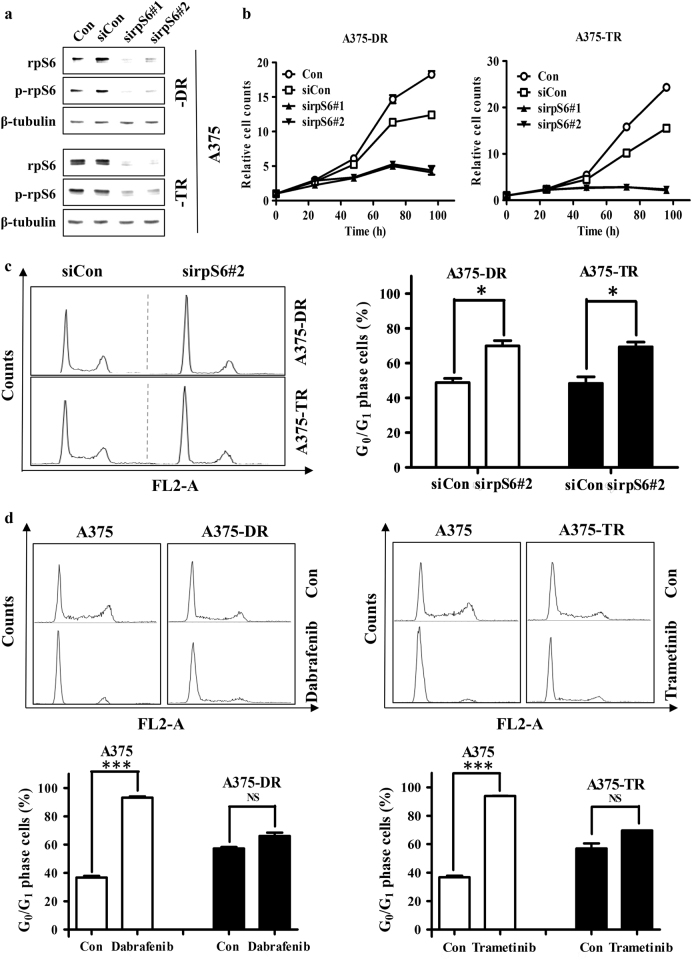Fig. 2.
rpS6 knockdown suppresses cellular proliferation and induces cell cycle arrest in resistant cells. a After transfecting A375-DR and A375-TR cells with rpS6-targeted siRNA (sirpS6#1, sirpS6#2) or negative control siRNA (siCon), whole-cell lysates were prepared and probed for rpS6 and p-rpS6 by Western blotting. b After transfecting A375-DR and A375-TR cells with rpS6-targeted siRNA (sirpS6#1, sirpS6#2) or negative control siRNA (siCon), cellular proliferation was determined by cell proliferation assay. Results are presented as means ± SD (n = 3). The relative cell counts at 0 h is defined as 1.0. c Twenty-four hours after transfecting A375-DR and A375-TR cells with sirpS6#2 or siCon, cells were collected and analyzed by flow cytometry. Left: Representative experiment. Right: Summary data showing the percentage of G0/G1 phase cells in each cell line transfected with sirpS6#2 or control siRNA, expressed as means ± SD (n = 3; *P < 0.05). d A375, A375-TR, and A375-DR cells were treated with dabrafenib (100 nM) or trametinib (3 nM) for 48 h, then collected and analyzed by flow cytometry. Top: Representative experiment. Bottom: Summary data showing the percentage of G0/G1 phase cells in each cell line, expressed as means ± SD (n = 3; ***P < 0.001; NS, not significant)

